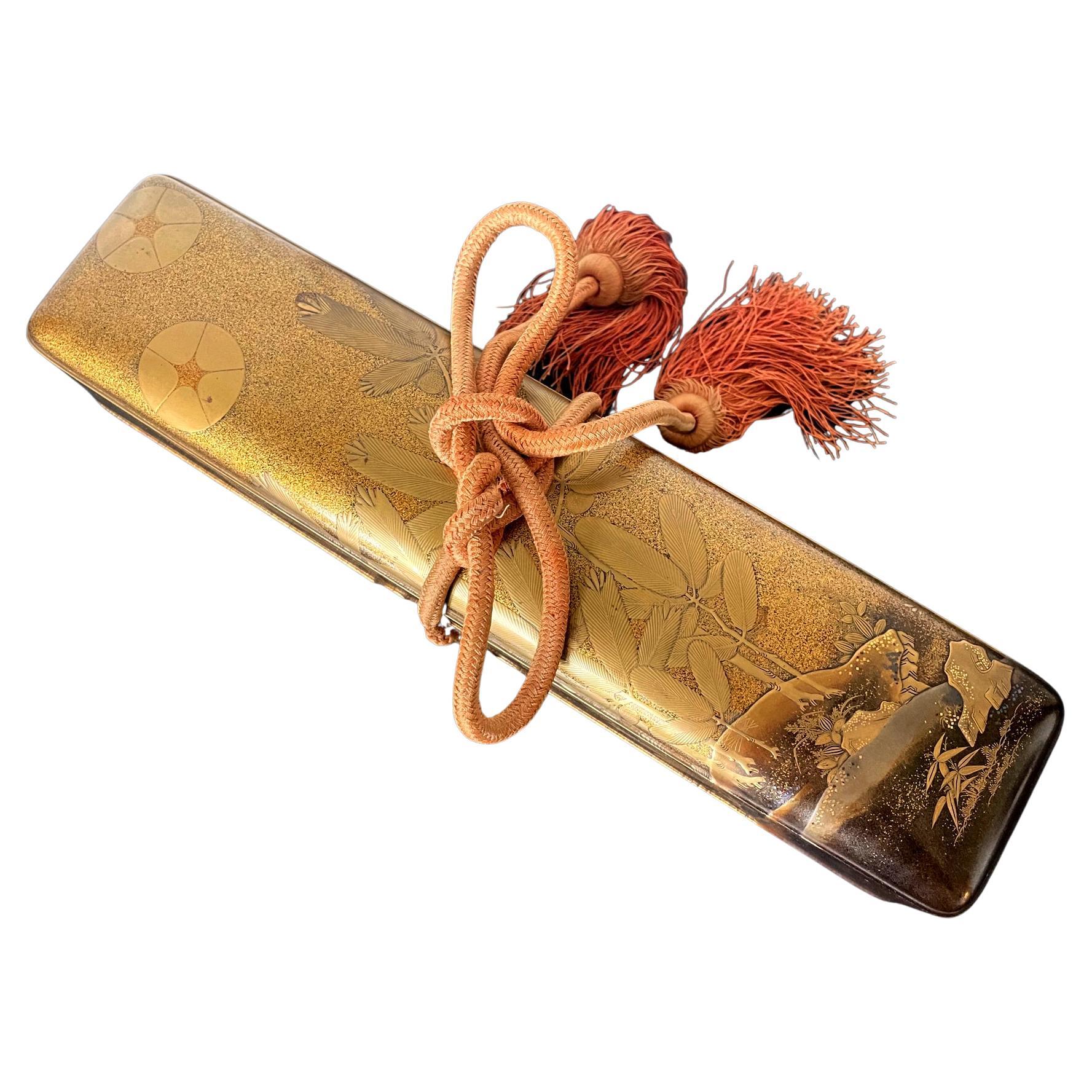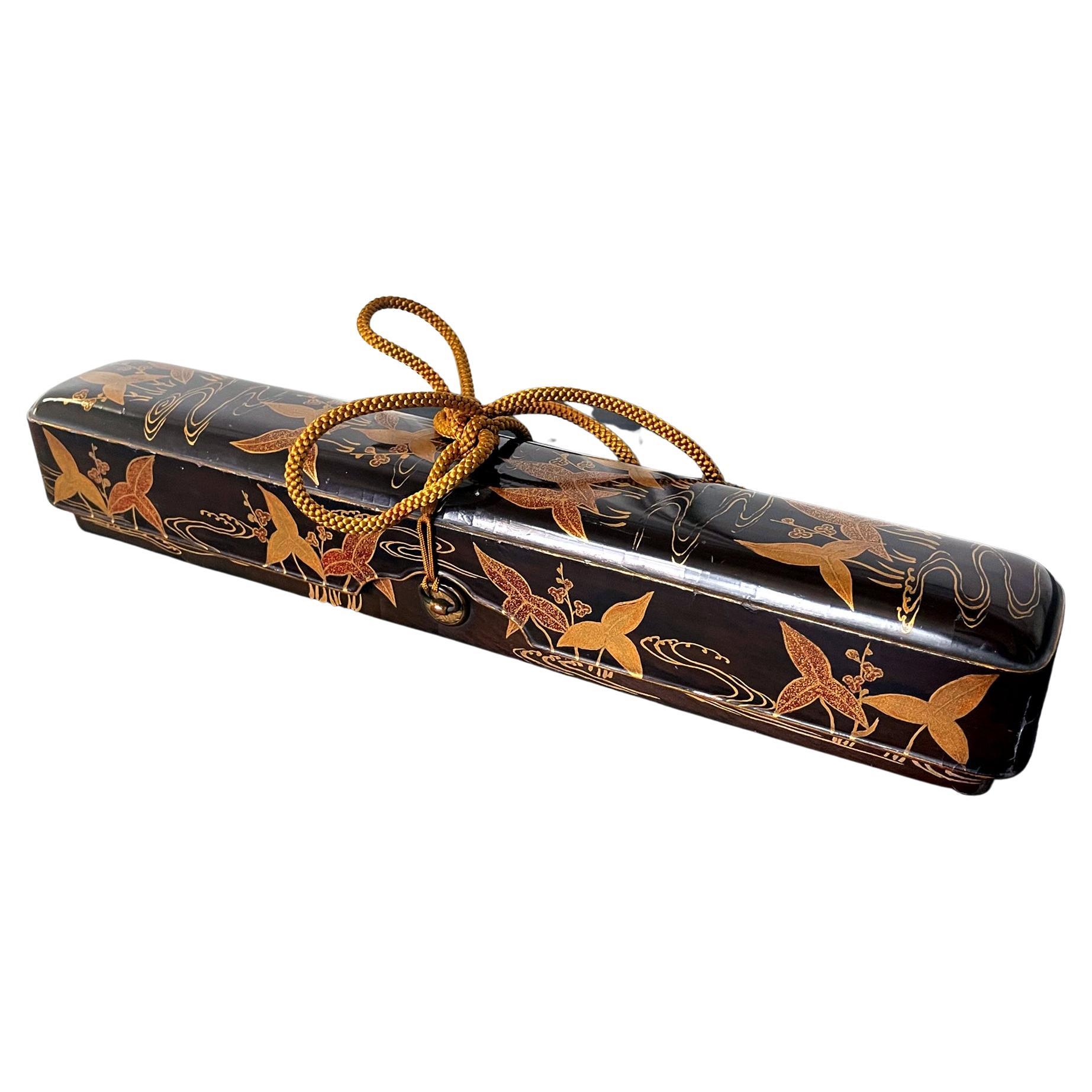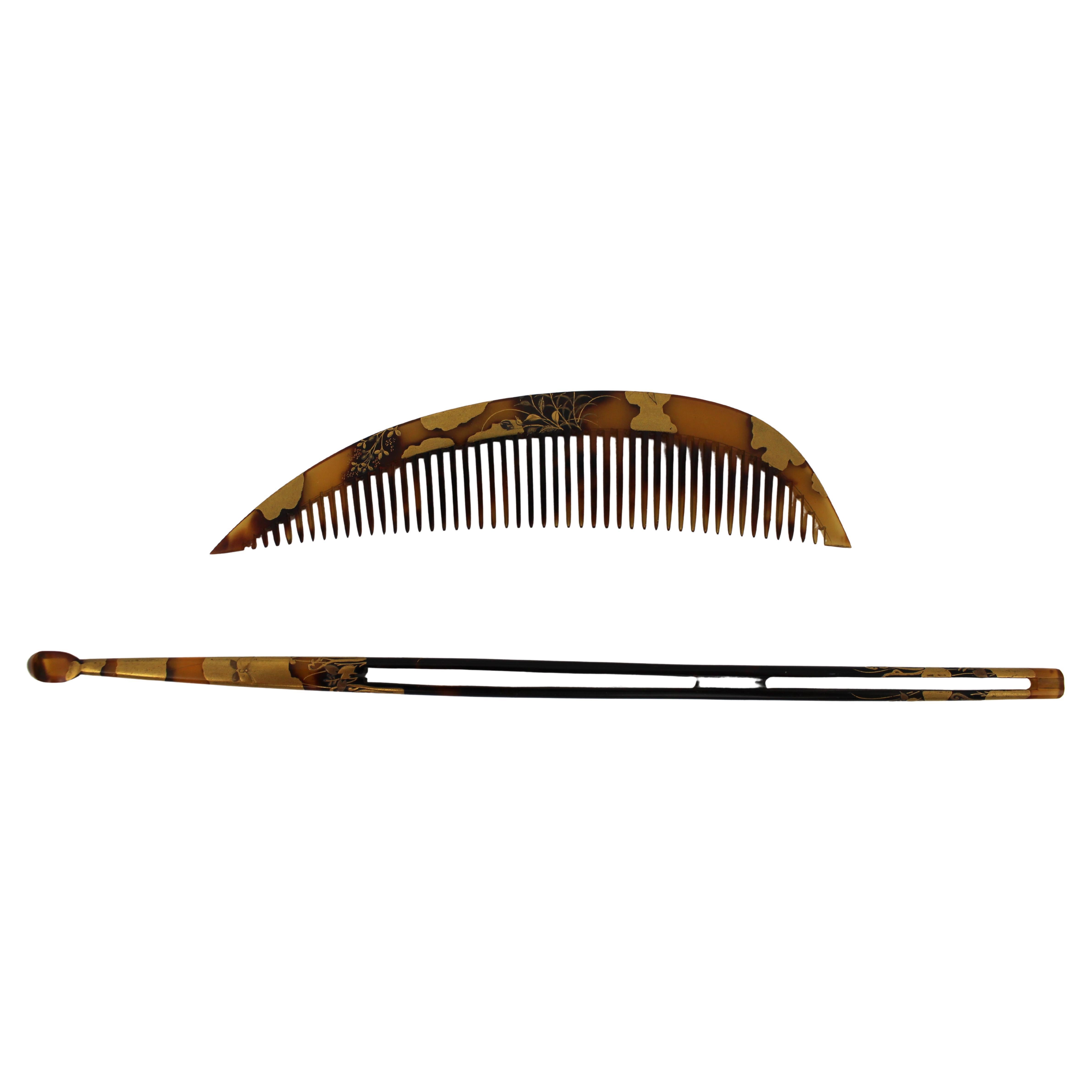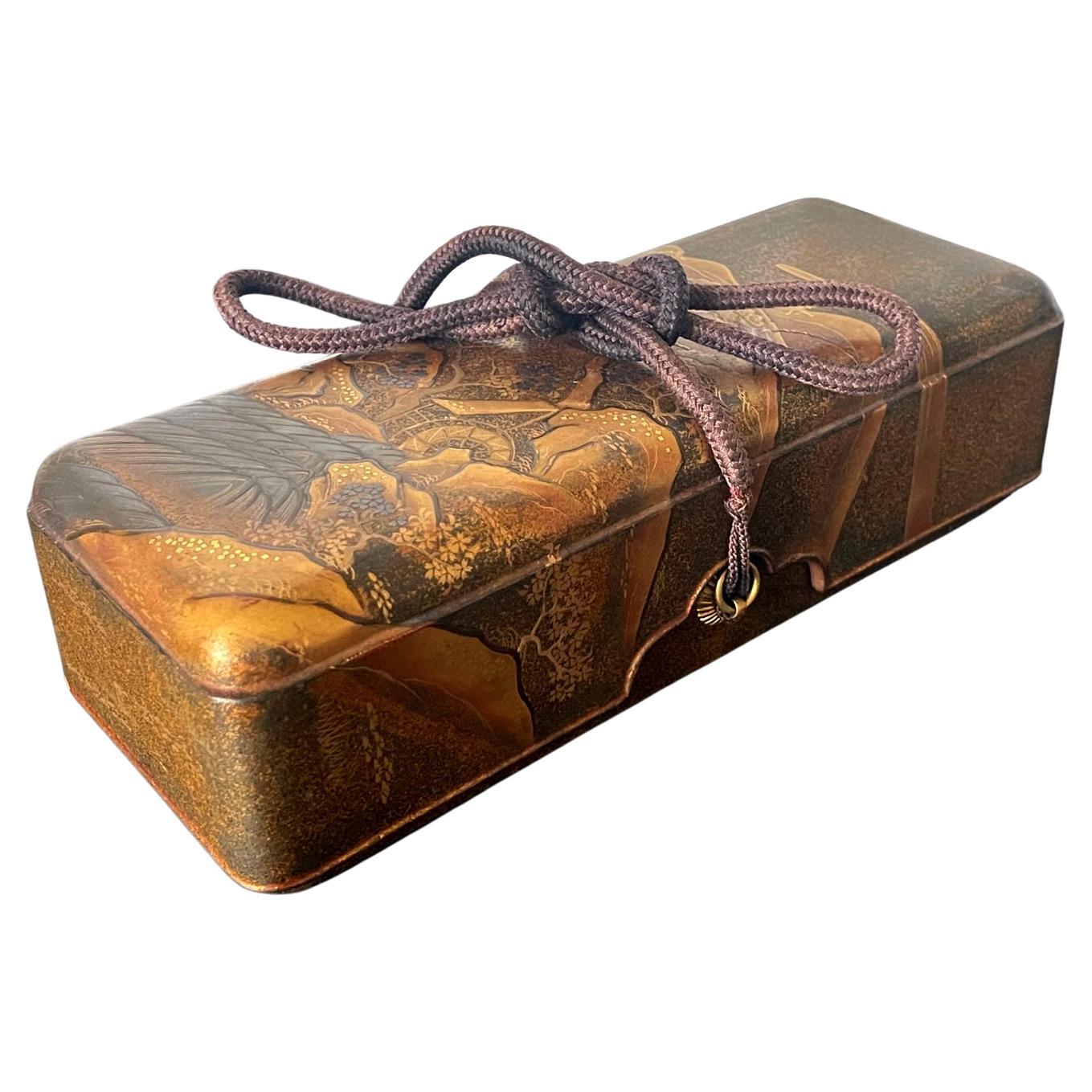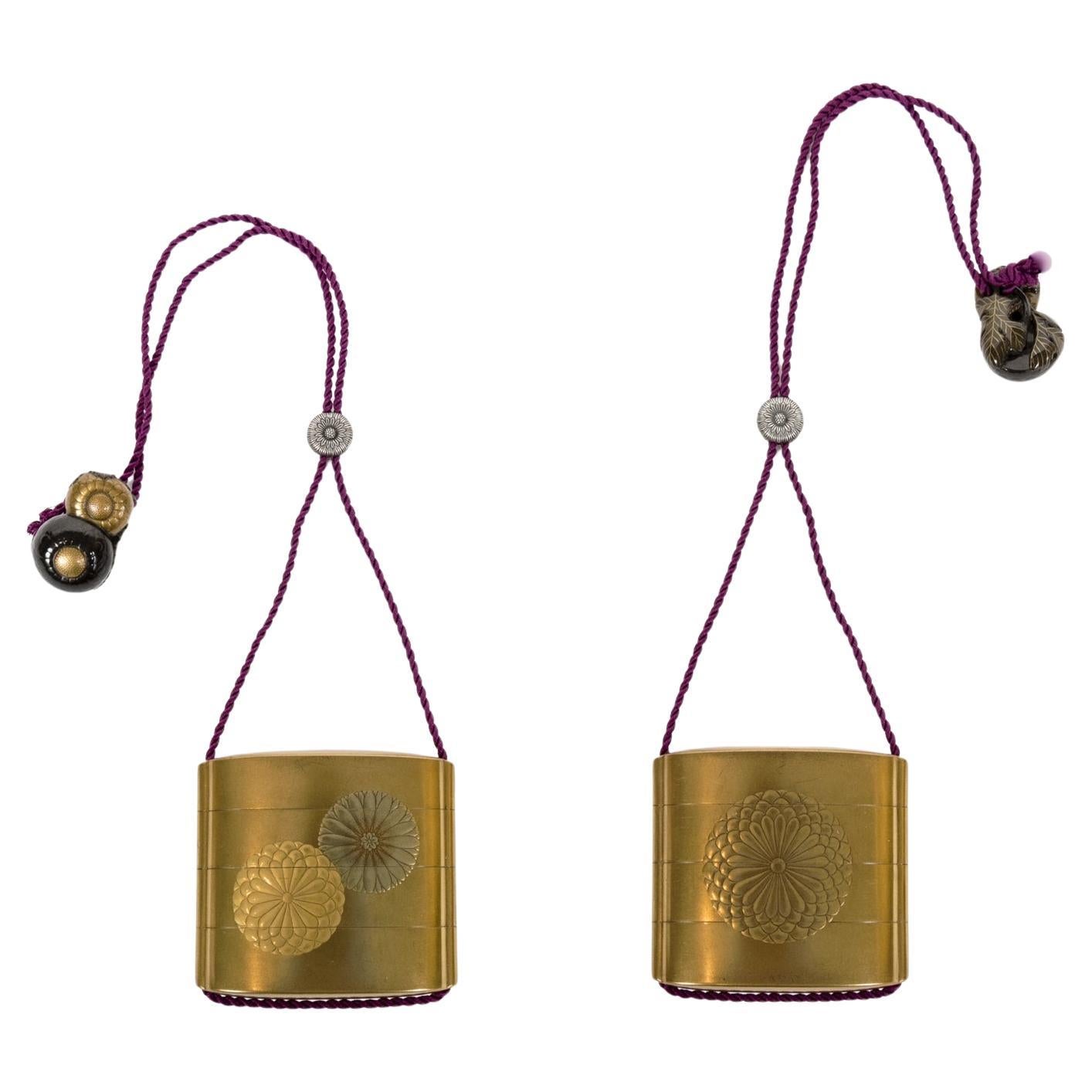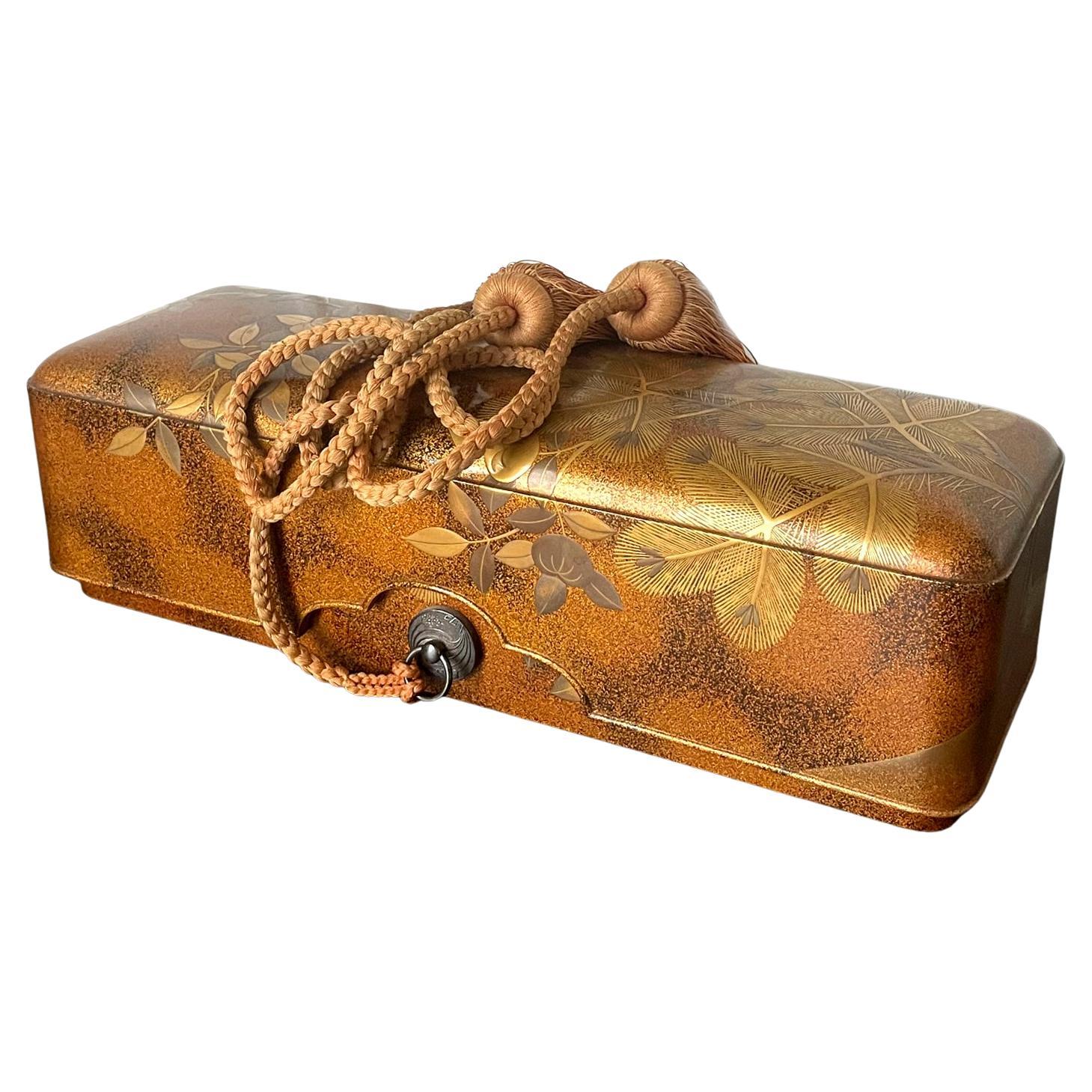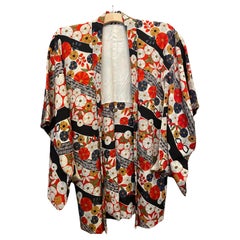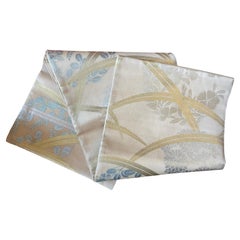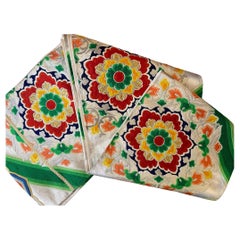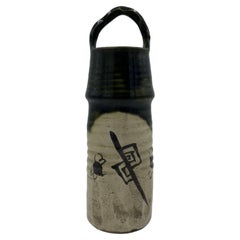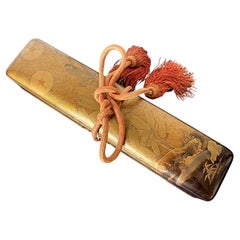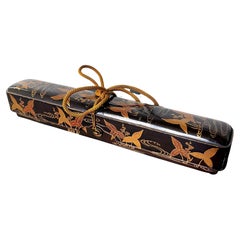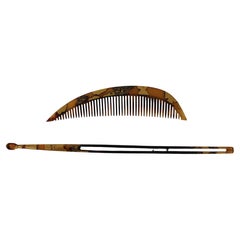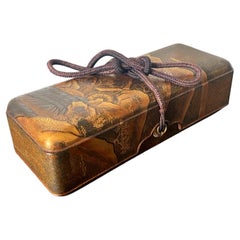Items Similar to Japanese Antique Kanzashi chrysantheme 1920s
Want more images or videos?
Request additional images or videos from the seller
1 of 16
Japanese Antique Kanzashi chrysantheme 1920s
$215.59
£159.77
€180
CA$294.33
A$327.43
CHF 171.64
MX$4,001.06
NOK 2,185.63
SEK 2,057.46
DKK 1,370.50
Shipping
Retrieving quote...The 1stDibs Promise:
Authenticity Guarantee,
Money-Back Guarantee,
24-Hour Cancellation
About the Item
This is a Japanese Kanzashi.
Kanzashi is a hair ornament used in traditional Japanese hairstyles.
These hair ornaments are made in about 1920s in Taisho era.
Two-piece stick-shaped kanzashi featuring a design on each end, which tend to be wider than the centre. Kogai resemble sheathed swords, with one end being removable in order for it to be placed in the hairstyle.
Dimensions:
Kanzasi H1.5 x 16 X 0.7 cm
- Dimensions:Height: 0.28 in (7 mm)Width: 6.3 in (16 cm)Depth: 0.6 in (1.5 cm)
- Style:Taisho (Of the Period)
- Materials and Techniques:
- Place of Origin:
- Period:
- Date of Manufacture:1920
- Condition:as it is not a new item, there are some scratches. if you want more photos, please let us know.
- Seller Location:Paris, FR
- Reference Number:1stDibs: LU6325242032732
About the Seller
5.0
Vetted Professional Seller
Every seller passes strict standards for authenticity and reliability
1stDibs seller since 2022
50 sales on 1stDibs
- ShippingRetrieving quote...Shipping from: Paris, France
- Return Policy
Authenticity Guarantee
In the unlikely event there’s an issue with an item’s authenticity, contact us within 1 year for a full refund. DetailsMoney-Back Guarantee
If your item is not as described, is damaged in transit, or does not arrive, contact us within 7 days for a full refund. Details24-Hour Cancellation
You have a 24-hour grace period in which to reconsider your purchase, with no questions asked.Vetted Professional Sellers
Our world-class sellers must adhere to strict standards for service and quality, maintaining the integrity of our listings.Price-Match Guarantee
If you find that a seller listed the same item for a lower price elsewhere, we’ll match it.Trusted Global Delivery
Our best-in-class carrier network provides specialized shipping options worldwide, including custom delivery.More From This Seller
View AllJapanese Silk Haori Poppy Multi Colours 1980s Showa
Located in Paris, FR
This is a silk jacket which was made in Japan.
It was made in Showa era around 1980s.
The haori is a traditional Japanese hip- or thigh-length jacket worn over a kimono. Resembling ...
Category
Vintage 1980s Japanese Showa Antiquities
Materials
Silk
Antique Silk Japanese Kimono Belt, 1970s
Located in Paris, FR
This is a Hitoe Obi made in Japan around 1970s.
Obi is a belt of varying size and shape worn with both traditional Japanese clothing like Kimono....
Category
Late 20th Century Japanese Showa Antiquities
Materials
Silk
Japanese Antique Silk Kimono Belt, 1960s
Located in Paris, FR
This is a Fukuro Obi made in Japan around 1960s.
It is made with Silk and it is in good condition.
Obi is a belt of varying size and shape worn with both traditional Japanese clothing like Kimono.Obi are categorised by their design, formality, material, and use, and can be made of a number of types of fabric, with heavy brocade weaves worn for formal occasions, and some lightweight silk obi worn for informal occasions.
Fukuro obi are slightly less formal than maru obi...
Category
Late 20th Century Japanese Showa Antiquities
Materials
Silk
$365 Sale Price
20% Off
Japanese Oribe Ware Porcelain Flower Vase 1920s Taisho era
Located in Paris, FR
This is an antique flower vase which was made in Japan.
It was made with the style Oribe (Oribe ware) around 1920 in Taisho era.
Dimensions:
8 x 8 x H26 cm
Oribe ware (also known a...
Category
Early 20th Century Japanese Taisho Vases
Materials
Porcelain
Japanese Wooden Kokeshi Doll style Togatta Shojiro SAKAI 1960s
Located in Paris, FR
This is a wooden doll which is called Kokeshi in Japanese.
This kokeshi was made in Japan around 1960s by kokeshi artist Shojiro SAKAI.
He was born in Sendai, Miyagi prefecture in 1s...
Category
Vintage 1960s Japanese Showa Animal Sculptures
Materials
Wood
Japanese Antique Hanten "Onishiko" with Cotton showa (around 1960s)
Located in Paris, FR
Hanten is a type of traditional Japanese garment that is often referred to as a "short coat" or "jacket". `it has a loose, kimono-like design with a straight collar and is typically ...
Category
Vintage 1960s Japanese Antiquities
Materials
Cotton
You May Also Like
Japanese Lacquered Gold Maki-E Naga Fubako Meiji Period
Located in Atlanta, GA
A Japanese lacquered wood Naga Fubako (a long box used to store document or large scroll painting), circa 19th century Meiji period. The rectangular box features an unusually deep lipped lid with slightly rounded corners, a conforming lower box with bronze medallion rings with tasseled...
Category
Antique 19th Century Japanese Meiji Lacquer
Materials
Wood, Lacquer
Japanese Lacquered Maki-E Fubako in Kodaiji Style
Located in Atlanta, GA
A rare Japanese lacquered wood fubako decorated in Kodaiji maki-e style circa early 17th century the beginning of the Edo period, possibly early toward the end of the Azuchi-Momoyama period. The rectangular, long and slim box features a deep lipped lid with slightly rounded corners, a conforming lower box with two bronze medallion rings with tasseled...
Category
Antique Early 17th Century Japanese Edo Lacquer
Materials
Wood, Lacquer
19th Century Japanese Makie Kushi and Kanzashi Hair Ornament Set
Located in Worcester, GB
19th Century Japanese Makie Kushi and Kanzashi Hair Ornament Set
A fine 19th-century Japanese kushi (comb) and kanzashi (hairpin) set, crafted in tortoiseshell or similar material and decorated in the makie technique with gilt lacquer. The kushi features a gently arched form with intricately applied gold foliage and floral motifs. The kanzashi is delicately shaped, with gilt decoration echoing the comb’s design, and includes a split shank and scooped end typical of traditional Japanese hair...
Category
Antique 19th Century Japanese Collectible Jewelry
Materials
Lacquer
Japanese Lacquered Maki-e Fubako Edo Period
Located in Atlanta, GA
A Japanese lacquered wood fubako (a box used to store document or small scroll painting), circa second half of 19th century late Edo period. The rectangular box features an unusually deep lipped lid with slightly rounded corners, a conforming lower box that is almost entirely covered by the lid which has two bronze medallion rings with tasseled...
Category
Antique 19th Century Japanese Edo Lacquer
Materials
Wood, Lacquer
Japanese lacquered Inro chrysantemum
Located in PARIS, FR
Beautifull Inro of three compartments made in kinji lacquer with an hiro maki-e
ornament chrysanthemum flowers of gold and silver lacquer. Inside is in fundame
lacquer.
Signed by J...
Category
Antique Mid-18th Century Japanese Lacquer
Materials
Lacquer
Japanese Lacquer Maki-E Scroll Box Fubako by Kansonsai Edo Period
Located in Atlanta, GA
A Japanese lacquered wood fubako (a box to store document or small scroll painting) circa late 18th century of Edo period. The rectangular box features a deep lid with rounded corners and recessed mid-edge and a lower box with two bronze medallion rings and tasseled silk ties. The surface of the fubako was elaborately decorated with hiramaki-e and a low takamaki-e on a mottled Mura-nashiji background. The motifs on the lid depict branches of Japanese pine with finely rendered needles on the lower part; on the upper part, it showcases fruited persimmon branches. Two different shades of gold fundame were used to contrast the design and augmented by scattered gold kirigane to highlight some of the leaves. The design continues and cascades down to all sides of the lid as well as the walls of the box. The two bronze medallions appear original to the box and the silk ties show significant fading from the age. This Fine fubako is signed on the lower wall "Kanshosai" in Kanji with a kao mark. All the trims were finished in gold fundame and the interiors a dense nashiji in gold.
Kanshosai is the mark of the distinguished lacquer artist Lizuka Toyo I who also signed his work "Toyosai". He was active in the second half of the 18th century during Edo period, employed by Hachisuka Shigeyoshi (1738-1801), daimyo of Awa on Shikoku Island. Although most survived work bearing his marks are inros, he was also known to decorated trays and other larger objects...
Category
Antique Late 18th Century Japanese Edo Lacquer
Materials
Wood, Lacquer
More Ways To Browse
Japanese Antiques
Japanese Sword
Japanese Sword Furniture
Asian Sword
Antique Japanese Sword
Antique Japanese Swords
Japanese Hair Ornaments
Sword Stick
Antique Kanzashi
Gandhara Head
Han Dynasty Dog
Neolithic Amphora
Chinese Doll House
Gandhara Buddha
Japanese Pillow Vase
Tibetan Conch Shell
Vintage Indigo Kimono
Northern Wei Dynasty Painted Pottery
